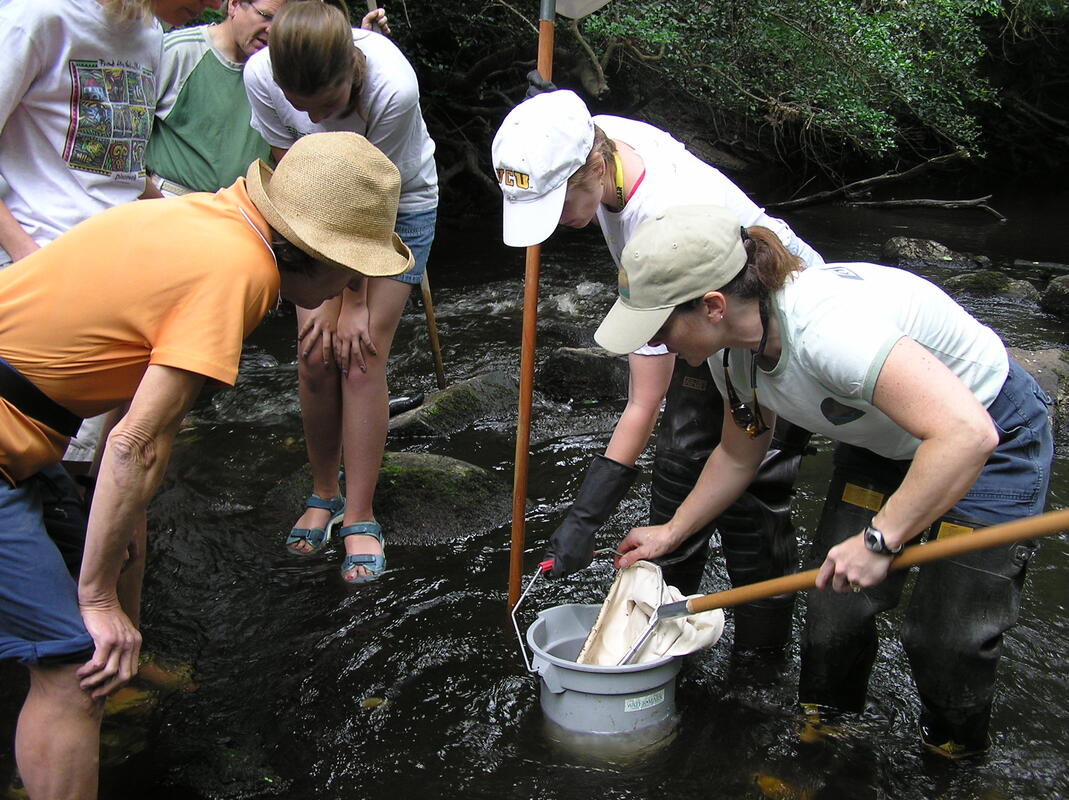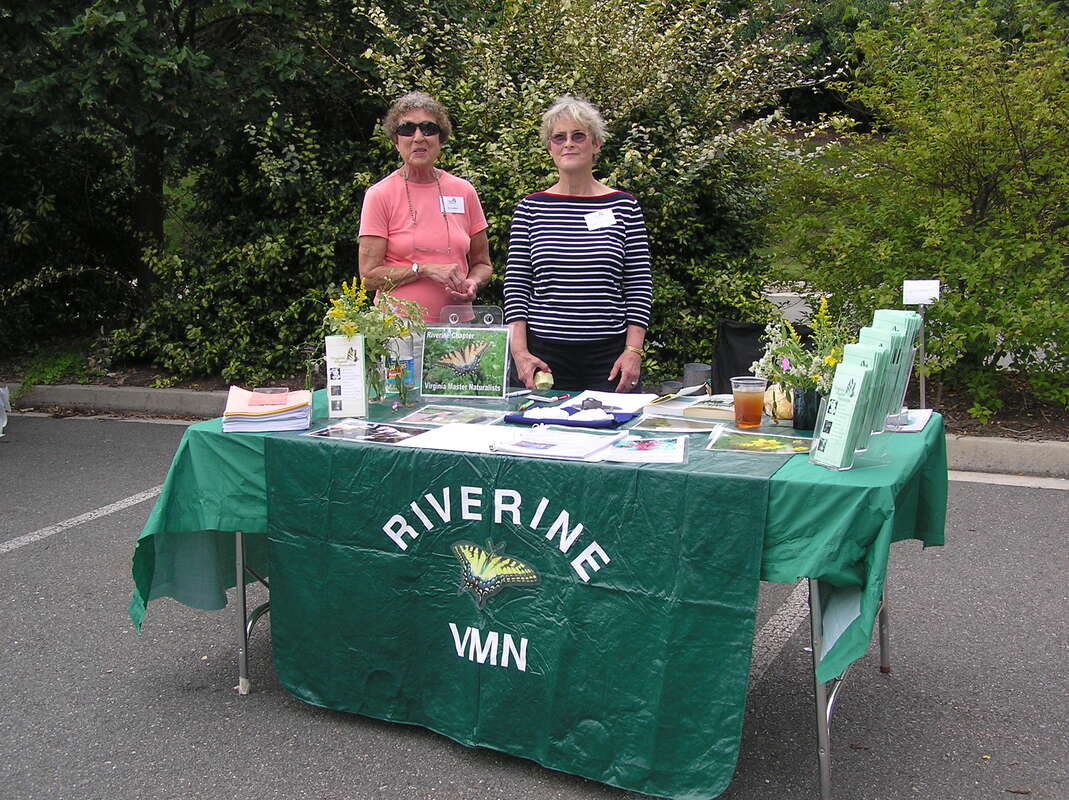Riverine Chapter VMN
Establishment and the Early Years of the Chapter
Beginnings: In 2006 Colleen Calderwood, Hanover County Cooperative Extension Agent at the time, recruited four Hanover Master Gardeners and Kathleen Ogilvy from the local Virginia Department of Forestry office to attend a training and orientation session for the new volunteer Virginia Master Naturalist Program. Held at Douthat State Park in May of 2006, the training session was designed to explain the program’s goals and how to organize a local Virginia Master Naturalist Chapter.
As stated in its mission, “The Virginia Master Naturalist Program is a statewide corps of volunteers providing education, outreach, and service dedicated to the beneficial management of natural resources and natural areas within their communities. Interested Virginians become Master Naturalists through training and volunteer service.” Because of the diversity of natural areas, resources, and needs in the state, the VMN volunteer program required each local chapter to design its own training and projects within general state guidelines. This flexibility also required more time and organizational efforts for members of the self-run chapters.
At the close of the Douthat training, the six recruits chose the name Riverine for our new chapter in recognition of the importance of the various rivers in central Virginia to our region. (As the only chapter in central Virginia, Riverine initially included members from Richmond City, Hanover, Henrico, Chesterfield, Goochland, New Kent and several other counties.) The six who attended the training formed a Local Coordinating Committee (LCC), as required by the state organization, and were responsible for adapting by-laws from a provided sample that would govern the chapter; organizing a training program; and recruiting members.
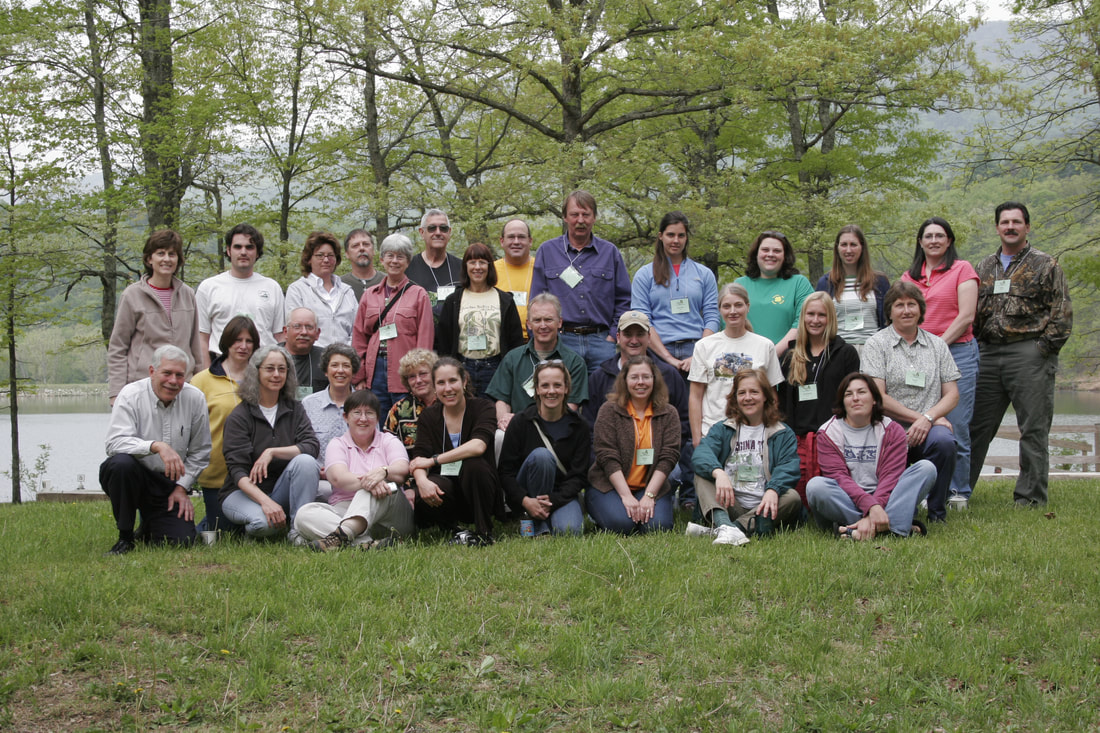 Participants in the first VMN New Chapter Coordinators Training at Douthat State Park in May 2006.
Participants in the first VMN New Chapter Coordinators Training at Douthat State Park in May 2006.
The most important and time-consuming work for the LCC was recruiting members and organizing a training program for the chapter. Two different training models were outlined at the Douthat Conference: 1) a systems approach, and 2) an “ologies” perspective. The first looked at different ecological systems such as forests, streams, and coastal systems. The second focused on organisms in ecological systems such as mammals, birds, plants, amphibians, etc. In the end the Riverine LCC followed the hybrid model that began with basic ecological principles and geology, followed by aquatic systems, forests, wetlands, coastal systems, and urban/suburban systems. Mammals was also taught by Lou Verner in that first class. Our instructors from the state natural resource agencies were very generous from the beginning in donating their time to instruct our classes. Many including Lou Verner (DWR), David Spears (State Geologist from DMME), Carl Hershner (VIMS), and Bill Shanabruch taught Riverine classes from the beginning (until retirement or after).
Recruiting trainees for the program turned out to be the easiest task. By the end of 2006 before the first class was to start in January of 2007 at the Hanover Department of Social Services conference room (known as the DSS), approximately 36 people had applied for the training. Because of limited space four people had to be turned down, and the 32 remaining applicants crowded into the room that comfortably held 24. The 2007 training class ran from January through March.
An important part of training required 10 hours of field training. One of the first was stream monitoring for water quality using macroinvertebrates as an indicator.
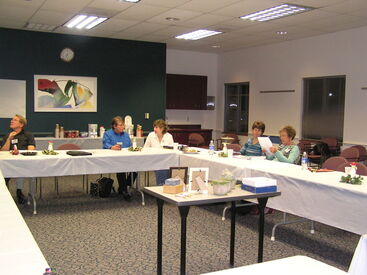 First Riverine Annual Meeting, Hanover DSS Room, December 2007.
First Riverine Annual Meeting, Hanover DSS Room, December 2007.
Another early education project was a two-hour workshop on bats organized by six Riverine members in response to a request from Henrico County. The program stressed the importance of protecting bats and dispelled myths associated with bats. Following the presentation attendees were offered the chance to make a bat house from kits put together by the Riverine volunteers.
Riverine volunteers helped staff education booths at the Virginia State Fair for our sponsoring agencies (DOF, DCR and DWR). Our first citizen science project was Wildlife Mapping. Lou Verner (DWR) provided the advanced training. We kept paper records of sightings but reported them online.
In December of 2007 Riverine Chapter held its first annual meeting, approved the by-laws drafted by the LCC and elected the first slate of officers. With the election of officers for the first Riverine Board of Directors, the LCC was disbanded, and Riverine became an official chapter of the VMN. Four members of the 2007 training class, Nick Conklin, Kathleen Ogilvy, Mary Ellen Stohr, and Emily Gianfortoni, continue as Riverine members.
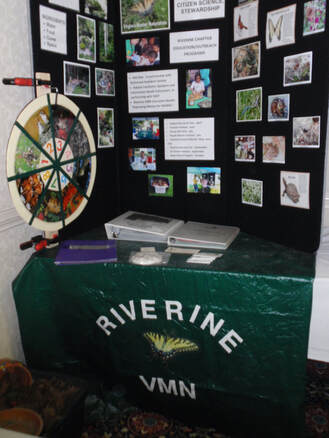 Riverine booth promoting “Habitat at Home” project with spinning wheel on left.
Riverine booth promoting “Habitat at Home” project with spinning wheel on left.
Our chapter continued to grow with 28 people in the 2008 class and 22 in the 2009 class. Perhaps because of the 2008 recession the 2009 class had the smallest number of applicants in our history.
Our projects continued to grow. Through the RAS Kids program our volunteers continued to introduce hundreds of city children to the outdoors. The Riverine Education/Outreach Committee introduced its first education booth highlighting plants for butterfly gardening at the Lewis Ginter Botanical Garden Fest.
Education booths continued to be one of the most successful endeavors in the early years of the Chapter. Members Nick Conklin and Mary Ellen Stohr created a spinning wheel with photos of wildlife and information cards about each animal. This game was a big draw for kids at our booths for many years.
Other events where our booths appeared during the first years of the Chapter included the Hanover Tomato Festival, Henrico Harvest Festival, and Virginia Garden Festival at the Science Museum of VA. Booth themes centered around providing information about Virginia’s wildlife including creating habitat for wildlife and gardening for butterflies and pollinators. The chapter invested in a canopy, backdrops, and better signage for our booths.
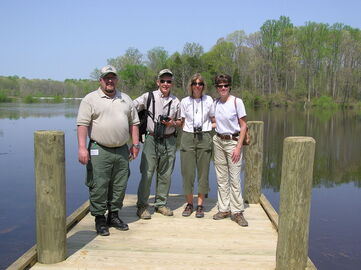 DWR Wildlife Refuge in Powhatan. Riverine members worked on building a trail along the lake in 2009.
DWR Wildlife Refuge in Powhatan. Riverine members worked on building a trail along the lake in 2009.
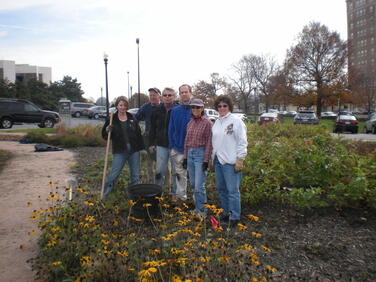 Planting the Bayscape Garden at the Science Museum of Virginia. 2009.
Planting the Bayscape Garden at the Science Museum of Virginia. 2009.
Riverine was one of the first VMN chapters established in the state, and the structure of the program was much looser. We had to invent many things as we went along. While there were general guidelines from the state organization, we had great leeway in how we organized our training, how we chose members of the training classes, how we chose our projects, and how strictly we enforced recording of volunteer hours.
There was both a cost and a benefit from this looser structure. Here are some of the challenges and successes we faced as an organization in the early years.
- Retention of Members. Except for the first training class in which we had to turn away a few applicants, we accepted almost all applicants to our training classes. Our classes were full every year and the trainees were uniformly enthusiastic about the program and anxious to volunteer. However, many of them did not fully understand the necessity of completing all of the class requirements including the 40 volunteer hours on approved projects within the year. People who did not become fully certified in that timeframe were more likely to drop out within a year or two. On the plus side, the relative freedom from structure of the early years fostered a great deal of enthusiasm, variety, and creativity in our projects.
- Recording Hours. This was a huge issue before online recording of hours was initiated. The paperwork entailed, especially for the membership chair, was daunting. Those who were not used to recording volunteer hours had a difficult time understanding the importance to the program of documenting hours. Each member was required to record volunteer and training hours on paper sheets and to submit them to the membership committee by the end of the year for the annual report. Needless to say, few membership chairs signed on for a second year of duty. VMS, the first online timekeeping system, and now Better Impact have been a vast improvement over the earlier paper chaos.
- Training New Members. One of the strengths of our program from the beginning was the outstanding instructors we were able to engage for our training classes. Many of them who taught our classes during the first year in 2007 continued to teach them year after year even after retirement. Some of those who gave up a long evening and sometimes traveled a significant distance every year to teach a Riverine class include Lou Verner (Ecology and Mammals); Bill Shanabruch (Aquatic Systems); David Spears (Geology); Carl Hershner (Coastal and Estuarine Systems); and many others who came back almost as many years.
- Friends and Like-minded Colleagues. In addition to the many worthwhile projects in which Riverine members have been engaged over the years, fellowship with like-minded members has been the most rewarding personal experience. People we may never have met in our regular lives have become friends and people to share our passion for the natural world.
Current Riverine Members from the First Four Classes
Nick Conklin (2007)
Emily Gianfortoni (2007)
Kathleen Ogilvy (2007)
Mary Ellen Stohr (2007)
Cheryl Vosburg (2008)
Rod Allen (2009)
Sheila Barnett (2009)
Holly Hartley (2009)
Diane Jadlowski (2009)
Laura Greenleaf (2010)
Kitty Hardt (2010)
Nancy Kitchens (2010)
Catharine Tucker (2010)

